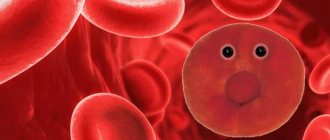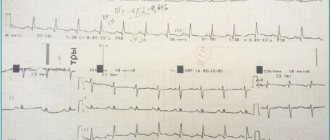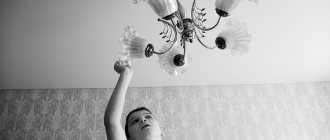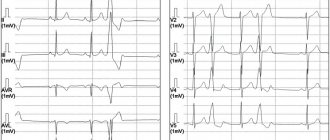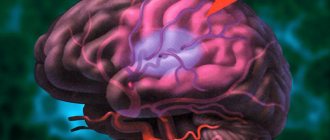Pediatrician (working with children of the first year of life)
Murzina
Oksana Yurievna
21 years of experience
Pediatrician of the highest category, member of the Union of Pediatricians of Russia
Make an appointment
Jaundice in newborns (most often physiological) is a condition in which the skin and whites of the eyes turn yellow due to high levels of a substance called bilirubin in the blood. Most babies develop 2-3 days after birth. Bilirubin is a yellow substance resulting from the destruction of hemoglobin during the natural replacement of red blood cells. Under normal conditions, it should be processed quickly in the liver. According to medical statistics, jaundice is diagnosed in 50-60% of cases in newborns born at term, and in 80% of premature infants. Bilirubin in excess amounts has a toxic effect on internal organs.
Why does newborns' skin turn yellow?
The most numerous blood cells are erythrocytes. Their main function is to transport oxygen from the lungs to tissues and organs through the bloodstream. The protein that is part of the red blood cell and holds the oxygen molecule is called hemoglobin.
The average lifespan of red blood cells is 3-4 months. The process of disintegration of old blood cells and the formation of new ones occurs in the body constantly and continuously. As a result of the breakdown of red blood cells, hemoglobin is released from the cells and is transformed into bilirubin.
Free (indirect) bilirubin enters the liver cells through the bloodstream. There, with the help of special enzymes, it is converted into so-called bound (direct) bilirubin. Through the system of bile ducts, as part of bile, it enters the intestines and partially back into the blood, and is then excreted from the body along with feces and urine, coloring them a characteristic yellow color. Failure at any of the above stages causes the accumulation of excess bilirubin in the blood.
Since bilirubin is highly soluble in adipose tissue, its excess quickly and easily accumulates in the subcutaneous fat, causing staining of the skin and mucous membranes. For the same reason, a pronounced excess of bilirubin can accumulate in the tissues of the nervous system, causing symptoms of its damage.
Features of the manifestation of the disease
High bilirubin in a newborn is observed in the case of active destruction of hemoglobin cells and slow removal of its components from the body. Liver enzymes must fully cope with this task, but in infants they are not highly developed.
A device for measuring the amount of substance is necessary to determine direct or indirect pigment. Additionally, at the moment the baby is born, a certain amount of blood is taken from his navel for analysis. This material allows you to determine the concentration and specialization of the fraction.
The norm in newborns should not exceed 75%. At the same time, the direct fraction is less than 25%. If an increase in the indicator is observed in both cases, then the infant is diagnosed with jaundice.
Important! The disease has two forms, which differ in the nature of the course and the negative impact on the body.
Physiological form
Abnormal levels of bile pigment in newborns with this pathology are recorded in 85%. Parents will be able to notice the first symptoms in their baby in the period from 2 to 4 days. Doctors will give a number of recommendations to mommy. The manifestation should go away on its own within two weeks.
Increased bilirubin in a newborn is often observed as a consequence of the negative impact of the following factors:
- During the period of bearing the baby, the woman suffered from exacerbation of chronic ailments.
- The fetus was diagnosed with hypoxia due to oxygen starvation of the brain.
- When wiping the fetal umbilical cord, accidental mechanical asphyxia occurred.
- The child was born with low birth weight and prematurely.
Important! Most often, bilirubin levels in newborns stabilize within a week. Immediately after this, the baby begins to gain weight normally and develop quickly.
Pathological manifestation of the disease
Newborns 1 month of age have an increased risk of developing pathological jaundice.
The pigment begins to actively accumulate in tissues in the event of the negative impact of the following external and internal factors:
- Increased bile pigment in a newborn, which is observed in the event of an Rh conflict between the blood of mother and child.
- Poor patency in the baby's intestines.
- Hereditary predisposition to active breakdown of red blood cells.
- Liver damage by various infectious agents.
- Premature onset of labor in a woman.
- Disturbances in the hormonal system.
- The use of a number of medications to induce labor.
Important! The pathological picture is aggravated by intense staining of stool and urine. In this case, the baby is suspected of serious disturbances in the functioning of the biliary tract.
Why do newborns develop jaundice so often?
The frequent occurrence of jaundice in newborns is due to the following reasons:
- the newborn has a large number of red blood cells in the blood, which helps prevent the development of hypoxia;
- The structure of hemoglobin in a fetus differs from the structure of hemoglobin in an already born baby and an adult. Fetal hemoglobin is called fetal hemoglobin. It has a greater affinity for oxygen and less resistance to changes in environmental conditions. Immediately after birth, there is an intensive breakdown of fetal hemoglobin and its replacement with “ordinary” hemoglobin. This sharply increases the amount of free hemoglobin, and then bilirubin in the blood;
- characteristic of a newborn, the immaturity of liver enzymes involved in the conversion of free bilirubin into bound bilirubin;
- lack of intestinal microflora in the newborn, which also takes part in the removal of bilirubin from the body.
Due to these features, normal bilirubin in a newborn is several times higher than in adults. In children who, during intrauterine development or childbirth, encountered certain traumatic factors (prematurity, fetal hypoxia, intrauterine infection, bleeding), the risk of jaundice increases.
Possible complications
Treatment of jaundice in a newborn
Most often, jaundice goes away without consequences, but if the child already has congenital problems, complications are possible. In the case of Rh conflict between mother and child, the level of bilirubin in the blood rises quickly, which affects the brain. The most common complication of kernicterus is damage to the central nervous system, leading to cerebral palsy, as well as encephalopathy, expressed by increased intracranial pressure, cerebral edema, cysts, cerebral hemorrhages, and brain immaturity.
A fairly rare and most undesirable consequence is death. Kernicterus occurs in 4 stages:
- Oppression. The child becomes lethargic, apathetic, and does not breastfeed well.
- Excitation. The baby screams, arches his back, throws his head back.
- Imaginary well-being. There comes a period of calm when mothers think that everything is over and the child has finally recovered. However, this is not the case.
- Complication. The last stage is the most severe, when the bilirubin attack attacks brain cells, often resulting in cerebral palsy.
- Kernicterus requires effective treatment and constant monitoring. In the most severe cases, a replacement blood transfusion is performed. Such children need constant supervision by a neurologist, as well as rehabilitation and therapy that will help restore impaired body functions as much as possible.
- If a mother and child have a Rh conflict or a conflict of blood groups, complications in the form of a deep disturbance of metabolic processes can appear even before birth, in some cases this leads to intrauterine death.
One of the possible complications of severe jaundice is intravascular hemolysis, or in other words, decreased blood clotting, which is dangerous due to bleeding. If jaundice is caused by biliary atresia (complete blockage) and is detected early, the only treatment option is surgery.
What is physiological jaundice of newborns?
Up to 90% of the total number of jaundices are physiological. This means that they do not require medication correction, do not harm the child’s health and go away on their own over time.
Features of physiological jaundice are:
- the appearance of signs of jaundice no earlier than 2-3 days of life. Earlier onset of symptoms often has an unfavorable course;
- increasing manifestations by the end of the first week of life;
- the duration of the course is no more than 2-3 weeks. If jaundice persists, it makes sense to look for the cause;
- low intensity of skin coloring. Physiological jaundice is characterized by a change in skin color on the face and torso, as well as staining of the sclera. In this case, the baby’s arms and legs usually remain pink;
- no other symptoms other than skin coloring;
- no change in the color of urine and feces;
- no changes in the general blood test;
- in a biochemical blood test, the level of blood bilirubin increases due to indirect. At the same time, the level of liver enzymes (ALT, AST) remains normal;
- The blood bilirubin level never reaches critical values sufficient for the development of neurological disorders.
Pediatrician, physiotherapist, head of the pediatric medical department
Neonatal jaundice is a change in the color of the skin, conjunctiva and sclera (whites of the eyes) in newborns to a yellowish tint due to increased levels of bilirubin (a pigment that is formed when hemoglobin breaks down) in the blood plasma during the newborn period. Neonatal jaundice is usually mild and transient. However, it is important to monitor newborns with severe jaundice or whose jaundice does not resolve naturally, as this may lead to long-term negative consequences. Severe neonatal hyperbilirubinemia is associated with a neurological dysfunction known as bilirubin-induced neurological dysfunction (BIND). In severe hyperbilirubinemia, unconjugated bilirubin crosses the blood-brain barrier, binds to the basal ganglia and brainstem nuclei, leading to acute bilirubin encephalopathy, or progresses to permanent neurological dysfunction that manifests as cerebral palsy, seizures, buckling, and sensorineural hearing loss.
Is it necessary to treat physiological jaundice?
Physiological jaundice in newborns does not require treatment with medications, but you should adhere to some recommendations:
- A nursing mother needs to put her baby to her breast more often and not take long breaks between feedings. This promotes normal bowel movements in the child, and most of the bilirubin is excreted from the body in feces;
- bottle-fed babies also require frequent feeding with small portions, with mandatory supplementation with water.
Jaundice due to breastfeeding disorders
A decrease in intestinal activity in a newborn leads to increased enterohepatic circulation. Jaundice in the absence or insufficient breastfeeding and intestinal obstruction are common conditions associated with increased enterohepatic circulation, which leads to unconjugated hyperbilirubinemia. Non-breastfeeding jaundice occurs in the first week of life and is caused by insufficient breast milk intake, which leads to dehydration and sometimes high sodium levels in the baby. Lack of breastfeeding leads to decreased intestinal motility and decreased excretion of bilirubin in feces or meconium. This jaundice occurs at the end of the first week, peaks in the second, and usually resolves by 12 weeks of age.
Why does jaundice last?
In some cases, jaundice may be more severe: with higher levels of free bilirubin and/or lasting up to 3-4 months. There are several reasons for this:
- A reduced volume of breast milk or formula, and nutritional deficiencies immediately after birth somewhat worsen and prolong the course of jaundice.
- Fully breastfeeding in the first months of life can prolong the period of jaundice and increase bilirubin levels. This condition is called breast milk jaundice.
The cause of “breast milk jaundice” is still not clear. You can talk about such jaundice if it:
- delayed longer than 1-2 months of life;
- bilirubin level remains above 170-180 µmol/l;
- there is a tendency to a slow decrease in bilirubin;
- temporary withdrawal of breastfeeding leads to a sharp decrease in blood bilirubin.
Both conditions are safe for the baby and do not require treatment. In case of breastfeeding jaundice, in rare cases, with very high blood bilirubin levels, the doctor may recommend a temporary refusal of breast milk. However, in the vast majority of cases this is not required. Neither Russian nor international clinical recommendations recommend weaning such a baby.
Norms of values
Normal bilirubin levels in infants may fluctuate. At birth, the limit is from 51 to 60 µmol/l, but hemoglobin continues to break down. As a result, tests may show inflated values already on the 3rd day of a baby’s life. Further indicators decrease.
Below is a table by day reflecting the rate of bilirubin.
| Age | Norm for full-term babies | Normal for premature babies |
| 24 hours | up to 85 | up to 97 |
| 36 hours | up to 150 | up to 120 |
| 48 hours | up to 180 | up to 150 |
| 3-5 days | up to 256 | up to 171 |
| 6-7 days | up to 145 | up to 145 |
| 8-9 days | up to 110 | up to 97 |
| 10-11 days | up to 80 | up to 50 |
| 12-13 days | up to 45 | up to 35 |
| more than 14 days | up to 20.5 | before 18 |
After a week of life, the high concentration of the enzyme decreases. The level of the substance stabilizes by 21 days. A baby's pigment levels should be constant at one month. The monthly table shows only the threshold values. When an increase in bilirubin is observed at 2-3 months of life, immediate therapeutic intervention is required.
| Age (month) | General indicator (µmol/l) |
| 1 month | 11,1 |
| Over a month old | 8.5 – 20.5 (bilirubin can fluctuate from 9 to 21 µmol/l even by two months of age) |
Premature babies are diagnosed with jaundice in almost 80 percent of cases. Their enzyme concentration, unlike that of healthy children, will be lower. In addition, bilirubin in this case is most often indirect.
What is hemolytic disease of the newborn?
Only 10% of all jaundices are pathological. This means that they may require more careful monitoring of the newborn, additional examination and treatment. In approximately 1% of newborns, jaundice is caused by hemolytic disease of the newborn (HDN).
Why does HDN occur? The reasons are differences in blood group, Rh factor or other factors of incompatibility between the blood of the fetus and mother. So, HDN occurs if:
- a Rh-negative mother has a fetus with Rh-positive blood;
- The mother has blood type 1, and the baby has 2 or 3.
Such differences lead to the formation of substances in the mother’s blood that destroy the red blood cells of the fetus. As a result, excessive amounts of hemoglobin and then bilirubin are released into the fetal blood.
Jaundice due to infectious diseases
Systemic infections such as toxoplasmosis, syphilis, varicella, rubella, cytomegalovirus and herpes simplex, and systemic conditions such as sepsis, shock and birth asphyxia may also present as jaundice caused by conjugated hyperbilirubinemia. Neonatal urinary tract infections and long-term use of parenteral nutrition in preterm infants are also known causes of conjugated hyperbilirubinemia.
How does HDN occur?
Features of the course of HDN are:
- earlier (as early as 1 day) onset of jaundice;
- the ability to achieve higher (sometimes critical) bilirubin numbers;
- high intensity of skin coloring;
- the presence of other symptoms - swelling, enlargement of the liver and spleen, lethargy, refusal to eat;
- possible addition of neurological symptoms;
- presence of anemia in a blood test;
- positive Coombs test.
HDN can be either mild or quite severe. As a rule, jaundice is easier when there is blood group incompatibility, and more severe when there is incompatibility according to the Rh factor.
How is jaundice diagnosed?
Diagnosis of a newborn with jaundice begins with a detailed history, including birth history, family history, and onset of jaundice. A complete examination of the newborn should include general appearance, eye examination, abdominal assessment for hepatomegaly, splenomegaly or ascites, neurological examination and assessment of skin rashes. Bilirubin levels can be assessed using a transcutaneous measurement device or blood draw to determine total serum or plasma bilirubin levels. Transcutaneous measurement reduces the frequency of bilirubin blood tests, but is not possible after phototherapy. In addition, if the transcutaneous bilirubin level is greater than the 95th percentile on the transcutaneous nomogram or the 75% of the total serum bilirubin nomogram for phototherapy, the total serum bilirubin level should be measured.
Ultrasound and additional tests such as antibody titers for infection, urine culture, viral culture, serologic titers, amino acids, and α-antitrypsin phenotype may be added to the list of investigations in the case of a suspected diagnosis of conjugated hyperbilirubinemia.
Laboratory testing of the mother's blood will also be required to distinguish between unconjugated and conjugated jaundice. The American Academy of Pediatrics recommends universal screening of all newborns for jaundice and identification of risk factors for severe hyperbilirubinemia. Major risk factors in newborns over 35 weeks include high bilirubin levels, jaundice observed in the first 24 hours of life, blood type incompatibility, gestational age between 35 and 36 weeks, previous siblings who have received phototherapy, cephalhematoma or significant bruising, absence of breastfeeding feeding and East Asian race. Prematurity is also a known risk factor for the development of severe hyperbilirubinemia.
Minor risk factors include maternal diabetes, polycythemia, male gender, and maternal age over 25 years.
What is the treatment for TTH?
Most often, phototherapy is used to treat tension-type headache: the newborn is placed for a while under a lamp emitting light of a certain wavelength. As a rule, phototherapy is well tolerated by babies, but in some cases it can cause dry skin and mucous membranes. Therefore, frequent breastfeeding and additional fluid administration are recommended for children undergoing phototherapy. The duration of phototherapy depends on the level of bilirubin in the blood.
Less commonly, HDN is treated with medications, red blood cells, or intravenous immunoglobulin preparations. In exceptional situations, a replacement blood transfusion is performed. These manipulations are carried out only in a hospital setting.
In some cases, with mild HDN, treatment is not required.
Jaundice resulting from impaired bile transport
Conjugated hyperbilirubinemia is always a pathology and occurs due to defects in the formation or transport of bile caused by mechanical obstructions to its outflow or systemic diseases that can affect the liver. Such conditions include biliary atresia, common bile duct cysts, idiopathic neonatal hepatitis, and Alagille syndrome. Congenital metabolic disorders such as galactosemia, tyrosinemia, antitrypsin-1 deficiency also manifest themselves in the form of conjugated hyperbilirubinemia. Biliary atresia is the most common cause of conjugated neonatal hyperbilirubinemia. It affects both intrahepatic and extrahepatic bile ducts and usually appears during the first 2–4 weeks of life along with pale stools. Initial diagnosis is by ultrasound, which may show the absence of the gallbladder. Ultrasonography can also detect cysts with normal or dilated intrahepatic bile ducts, or sclerotic ducts in biliary atresia.
Other causes of jaundice in a newborn
Other reasons are extremely rare. These include:
- Increased destruction of red blood cells due to medications, bleeding, or hereditary diseases. In this case, the clinic of the underlying disease comes to the fore, and jaundice acts as an additional symptom.
- Rare genetic abnormalities that interfere with the functioning of liver enzymes. Some of them undergo screening tests of newborns in the maternity hospital. As a rule, jaundice is not their only symptom.
- Impaired bile outflow associated with the abnormal structure of the biliary tract. For example, jaundice can occur due to congenital blockage of the bile ducts. Such jaundice is manifested by an increase in symptoms by 1 month of life, a characteristic greenish skin color, discoloration of feces and darkening of urine, a predominance of conjugated bilirubin in the blood, and the appearance of neurological symptoms. It is easily diagnosed by ultrasound of the abdominal cavity. Requires surgical treatment!
Determination of bilirubin level: blood sampling and non-invasive method
To determine the level of pigment, doctors do a blood test. Many mothers are interested in where they get biomaterial for research. In the first minutes of the baby’s life, a syringe needle is inserted into the cut umbilical cord, and after 2-3 days, when the analysis is repeated, into the heel or a vein on the head. The procedure is completely safe. During the study, all bilirubin fractions are determined. Premature babies are tested every day.
In adults, biomaterial is taken on an empty stomach; in children, its collection is most often not associated with meals. Sometimes the doctor may ask you not to feed the baby for 3 hours before the test.
The test results are compared, which makes it possible to determine the baby’s health status and the quality of liver function. The pigment level reaches its maximum value on the third day after birth. Then the indicators gradually decrease. If the baby has undiagnosed diseases, bilirubin does not decrease, but increases, poisoning the body.
To determine the amount of pigment, a special device is also used - a bilirubinometer. This is a photocell that records the color of the skin on the baby’s forehead, bridge of the nose or chest and determines the degree of yellowness of the tissues. The device makes it possible to evaluate the effectiveness of therapy and predict the course of jaundice.
The bilirubinometer test is most often done in babies who do not have symptoms of jaundice. Its advantage is that the result is instantly displayed on the screen, but the disadvantage is that the device does not show direct and indirect dye levels.
The next time the study is carried out at one month of age during a routine examination. The biomaterial is taken from the heel, vein in the head or arm.
Diagnostic methods
Most causes of neonatal jaundice are physiological, but it is very important to carefully monitor the child for timely detection and treatment of “dangerous” jaundice. Jaundice occurs in approximately 80% of all premature babies
Jaundice occurs in approximately 80% of all premature babies
In the maternity hospital, such manipulations are carried out without fail.
And in order to be examined and tested for bilirubin, the mother of a newborn baby should contact a local pediatrician.
First, he will examine the little patient and give an assessment:
- General condition, including reflexes.
- Adequacy of breastfeeding.
- The nature of urine and stool.
- Sizes of the liver and spleen.
- Check for the presence/absence of hematomas and cephalohematomas.
This will be followed by a referral for a blood test, which will fully reveal the amount of bilirubin. It is also necessary to send the patient’s urine and feces for examination.
Only by combining all the collected data can a specialist make a final diagnosis. An increase in bilirubin in the blood is not the only indicator!
Tests to determine
In the first week of a baby’s life, he has to be subjected to frequent tests that can determine any deviations from the norm in the body.
To determine bilirubin levels, two main tests are currently used: simple blood donation and bilitest.
A urine test for elevated levels of pigment in the body is rarely performed, as it helps determine the level of direct bilirubin, which is excreted in the urine.
Since this pigment disintegrates under the influence of fluid in the body and is not toxic to the child’s nervous system, a urine test may be prescribed as an additional test, but there is no direct need for it.
Did you know? Jaundice is one of the most common diseases in infants. About 65% of all newborns are exposed to it.
Private clinics and special laboratories have expensive professional equipment that can display the pigment content with an accuracy of tenths of one micromole.
Thanks to this, it is possible to determine the exact value of bilirubin in the child’s blood and begin prevention or treatment even before the first signs of jaundice appear.
Blood donation
Typically, the blood test scheme is as follows:
- the first blood draw is made from umbilical cord blood immediately after the birth of the child;
- the second time blood is taken from the heel a day after birth;
- the third and subsequent times are also carried out daily.
Children at risk, whose birth took place during a difficult pregnancy, are subjected to additional tests, taking blood from a vein on the head using a special thin needle with a diameter of only 0.3 mm.
With this type of blood sampling, due to the size of the needle, pain in the baby is practically eliminated, and such tests are trusted only by nurses and doctors with extensive experience.
Therefore, you should not refuse such an analysis, since it is taking blood from a vein that helps diagnose the state of the blood for the possible occurrence of pathologies or postpartum complications.
Important! For more accurate blood test results, you need to donate blood in the morning on an empty stomach.
Currently, computer systems with an automatic analyzer are used for blood and urine analysis. At the same time, the factor of human influence is excluded, which prevents possible errors in calculations.
Based on the results obtained, the doctor makes a diagnosis and, if necessary, begins treatment.
Usually, you can get a ready-made test in your hands 1-2 days after blood collection. In urgent cases, for a small additional payment, the result will be given after four hours.
Bilitest
This analysis is performed in cases of prophylaxis and when no signs of jaundice are observed.
Parents who are concerned about the baby’s health and do not trust blood sampling through a needle are also increasingly paying attention to this method
Bilitest is carried out using a special device that carries out an optical examination of the skin color on the applied part. The tester measures the degree of yellowness of the baby's skin and determines the level of bilirubin concentration.
Bilitest is the optimal means of analyzing bilirubin levels for newborns and young children, since it provides a test without the need for blood collection and pain.
The duration of the analysis is no more than two seconds, after which the result is displayed on the device screen within half a minute. Unlike blood sampling, bilitest can be performed at any time with any frequency.
The device allows you to carry out new diagnostics with a frequency of once every five seconds, while previous results are stored in the device’s memory, which can also be displayed on the screen for comparison.
The disadvantages of bilitest include the following:
- economy-class devices, especially those produced domestically, show the overall result without dividing into indicators of direct and indirect bilirubin;
- Certain demographic characteristics should be taken into account in the analysis. For example, a child’s slightly dark or pale skin may affect the accuracy of the determination.
Bilirubin and its fractions
Bilirubin is formed in the spleen and bone marrow as a result of the death of red blood cells (erythrocytes). The maximum lifespan of mature red blood cells is 120 days. After death, they are destroyed with the release of the iron-containing part - heme. The destruction of heme leads to the elimination of ferrous iron, and the remaining protein component is converted to bilirubin.
The function of bilirubin in the body is as a cellular antioxidant. It slows down oxidative processes, improving the renewal and functioning of the cell membrane.
Bilirubin is also an essential component of bile.
Total bilirubin is divided into 2 fractions:
- indirect – bile pigment, a product of heme breakdown after the degradation of red blood cells. Special properties: toxicity and ability to penetrate the blood-brain barrier. It does not dissolve in liquid and is not excreted in pure form from the body. Delivered to liver cells (hepatocytes);
- direct – a complex of the indirect fraction with sugar-containing substances (glucuronic acid) is formed in the liver. The fraction is water soluble and non-toxic. After formation, it is excreted into the systemic circulation with bile and delivered to the intestinal tract.
Further metabolism of the direct fraction leads to the elimination of acid with reduction to urobilinogen bodies. Some of them are reabsorbed and returned to the liver, and the remaining amount undergoes transformation by intestinal microflora and is excreted in the feces.
Reasons for low level
Low bilirubin is diagnosed in extremely rare cases. Among the main causes of this pathology are:
- iron deficiency;
- chronic malnutrition;
- low level of fetal hemoglobin.
Often a low value of the indicator is observed when the rules for performing the bilirubin test are violated. Certain medications, including ascorbic acid and antibiotics, can distort the results of the study.
Sometimes a decrease in pigment indicates various pathological processes, such as:
- chronic form of liver and kidney failure;
- leukemia at the acute stage;
- aplastic anemia;
- tuberculosis.
Also, a low enzyme may indicate various infectious diseases.
Reasons for the increase
Bile pigment can increase for several reasons, but they are all divided into physiological and pathological.
The cause of physiological jaundice was described in the previous section. Hemoglobin changes, many red blood cells are destroyed, and the liver simply does not have time to bind all the pigment. As a result of this, it is deposited in the subcutaneous fatty tissue, the sclera of the eyes and the baby’s skin turn yellow. The height of this condition occurs precisely on days 4-8 of the baby’s life. The laboratory indicator begins to increase already on the 2nd day. By day 4 it can reach 220 µmol/l in full-term infants and 170 µmol/l in those born prematurely.
Bilirubin in newborns is increased: the reasons for this are due to a normal physiological process, so there will be no health consequences. This condition goes away by the second week of the baby’s life, rarely by a month. Total bilirubin in newborns reaches the same level as for adults - from 5 to 20 µmol/l (the table represents the average value). There is absolutely nothing to worry about: up to 75% of babies, according to statistics, turn yellow in the first week of life. Adaptation to the world is a harsh process.
But pathological jaundice in children develops through several mechanisms. These include:
- hemolytic (suprahepatic);
- mechanical (subhepatic);
- parenchymal (hepatocellular).



